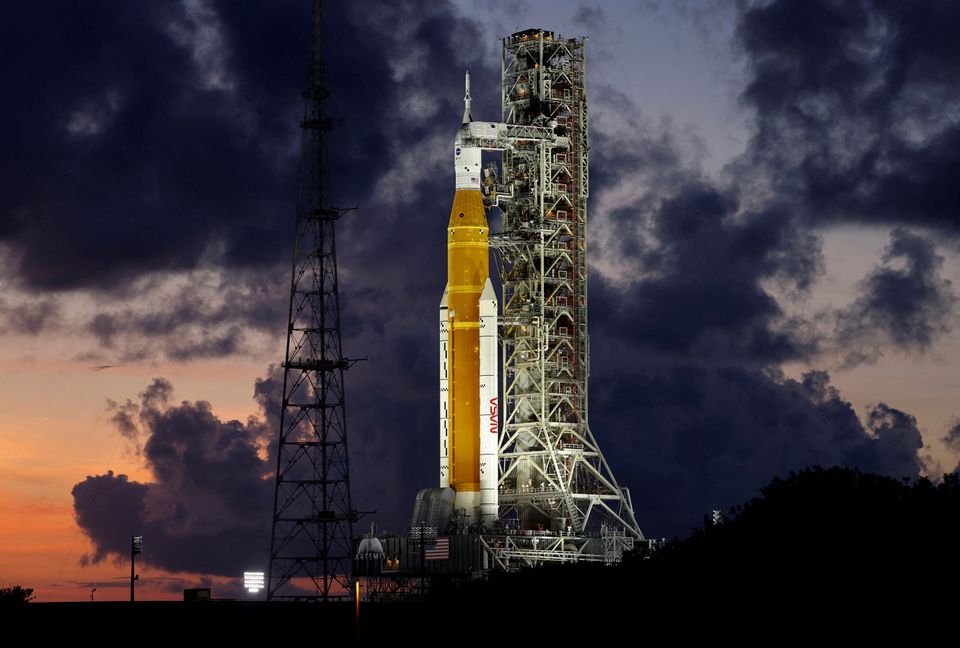NASA’s ‘imaginatively’ named Space Launch System (SLS) rocket that can ferry humans to and from the Moon for the first time in 50 years is on launch pad 39B this morning (Monday) at Kennedy Space Center in Florida.
A two-hour launch window for today is scheduled to open at 08.33 am local Eastern time (13.33 BST, 14.33 CEST) for the uncrewed test mission which will take the Orion capsule pn a 1.3 million mile 42-day test flight around the Moon and back.
Since the final Apollo mission to the Moon in 1972, the intervening 50 years have been populated with Space Shuttle missions into low Earth orbit and more recently crewed missions from private US space companies such as Jeff Bezos’s Blue Origin and Elon Musk’s SpaceX.
US taxpayers are expected to stump up $93 billion to finance the Artemis programme but prior to today’s planned launch NASA administrators insisted that Americans would find the cost to be justified.
“This is now the Artemis generation,” said NASA administrator and former Space Shuttle astronaut Bill Nelson. “We were in the Apollo generation. This is a new generation and this will be a new type of astronaut.”
For this debut mission to the Moon, the only ‘crew members’ aboard Orion - which is capable of carrying six astronauts - are specially equipped mannequins which will allow NASA to evaluate its next-generation spacesuits and radiation levels, as well as a soft Snoopy toy meant to illustrate zero gravity by floating around the capsule.
Up 200,000 spectators flooded to Florida's Space Coast at the weekend and in the early hours of Monday to catch a glimpse of NASA's first Moon rocket to fly in over 50 years. Their hopes mirror NASA's for a successful mission where nothing is guaranteed.
"This is a very risky mission," said Jim Free, NASA's associate director for exploration systems development. "We do have a lot of things that could go wrong during the mission in places where we may come home early, or we may have to have to abort to come home."
NASA has been trying to build a giant new rocket for nearly two decades. In 2004, the agency announced plans for a massive launcher called the Ares V as part of its Constellation programme to return to the Moon by 2020.
When that programme was ultimately cancelled by President Bush, it was replaced by the Artemis programme, though the Orion crew spacecraft did survive the transition. The five-segment solid rocket boosters on the SLS rocket (slightly larger than those used on NASA's Space Shuttle) and originally part of Constellation's Ares 1 rocket to launch Orion, also found new life in the SLS.
By early morning today indications were that NASA would not make the beginning of the two hour launch window as bad overnight weather and fuel tanking issues introduced delays. Weather forecasting predicted an 80 percent chance of good weather at the start of the window, slipping to 60 precent later due to the possibility of rain. Backup launch days are 2 and 5 September.
Lift-off draws close for NASA’s spectacular lunar return mission











